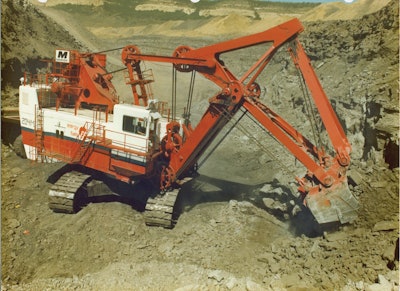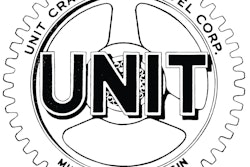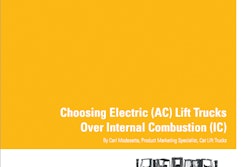
Manufacturers of loading shovels for mining applications needed to increase the digging force and efficiency of the shovel dipper without necessarily increasing the size of the overall machine. Two of these companies, Marion Power Shovel and Bucyrus-Erie, solved this problem in somewhat different ways. Marion’s answer was the Superfront.
The Superfront was based on two laws of physics: The triangle as the strongest possible structural design, and the multiplication of force in proportion to the length of a lever to which force is applied. The translation of these laws into principles was simple:
- Dramatically increasing bucket capacity by decreasing overall front end weight, largely through elimination of the boom and stick;
- Increasing digging force by allowing the bucket to be rotated by applied leverage as it moves through the bank to load;
- Using the strength of the triangular structural design to eliminate the bending stresses that conventional shovels undergo when loading; and,
- Increasing the shovel’s efficiency by moving the overall center of gravity closer to the center of rotation.
The Superfront concept originated in the mid-1960s as a means of more efficiently excavating coal from thin seams by digging in a level plane rather than an arc. As its superior digging power was realized, the concept was applied to excavating applications. After a three-yard 101M prototype tested successfully in 1967 with a five-yard bucket, two standard 191M loading shovels were equipped with Superfronts in 1972 and redesignated 194Ms.
Seventeen more Superfronts were produced from 1976 through 1988; designated model 204M, they wielded 20- to 40-yard buckets. Ten were shipped to the former Soviet Union, four to copper mines in Papua New Guinea, two to Wyoming’s Powder River Basin coal mines, and one to Australia.
The Historical Construction Equipment Association (HCEA) is a 501(c)3 non-profit organization dedicated to preserving the history of the construction, dredging and surface mining equipment industries. With over 4,300 members in 25 countries, activities include operation of National Construction Equipment Museum and archives in Bowling Green, OH; publication of a quarterly magazine, Equipment Echoes; and hosting an annual working exhibition of restored construction equipment.
Individual memberships are $30.00 within the USA and Canada, and $40.00 US elsewhere. HCEA seeks to develop relationships in the equipment manufacturing industry, and offers a college scholarship for engineering students. Information is available at www.hcea.net, by calling 419-352-5616 or emailing [email protected].


















